All About Police Identification and Records Officers
Police Identification & Records Officer Example Collect evidence at crime scene, classify and identify fingerprints, and photograph evidence for use in criminal and civil cases.
Daily Life Of a Police Identification & Records Officer
- Maintain records of evidence and write and review reports.
- Testify in court and present evidence.
- Process film and prints from crime or accident scenes.
- Create sketches and diagrams by hand or with computer software to depict crime scenes.
- Coordinate or conduct instructional classes or in-services, such as citizen police academy classes and crime scene training for other officers.
- Dust selected areas of crime scene and lift latent fingerprints, adhering to proper preservation procedures.
Featured schools near , edit
What Skills Do You Need to Work as a Police Identification & Records Officer?
Below is a list of the skills most Police Identification and Records Officers say are important on the job.
Active Listening: Giving full attention to what other people are saying, taking time to understand the points being made, asking questions as appropriate, and not interrupting at inappropriate times.
Critical Thinking: Using logic and reasoning to identify the strengths and weaknesses of alternative solutions, conclusions or approaches to problems.
Speaking: Talking to others to convey information effectively.
Reading Comprehension: Understanding written sentences and paragraphs in work related documents.
Writing: Communicating effectively in writing as appropriate for the needs of the audience.
Complex Problem Solving: Identifying complex problems and reviewing related information to develop and evaluate options and implement solutions.
Related Job Titles
- Forensic Technician
- Corrections Identification Technician
- Police Crime Scene Technician
- Criminalist
- Forensic Sergeant
Job Demand for Police Identification and Records Officers
In 2016, there was an estimated number of 110,900 jobs in the United States for Police Identification and Records Officer. New jobs are being produced at a rate of 4.5% which is below the national average. The Bureau of Labor Statistics predicts 5,000 new jobs for Police Identification and Records Officer by 2026. Due to new job openings and attrition, there will be an average of 7,500 job openings in this field each year.
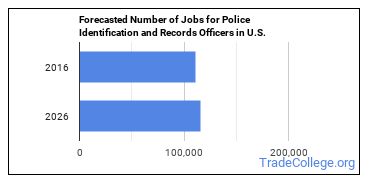
The states with the most job growth for Police Identification & Records Officer are Nevada, Utah, and Arkansas. Watch out if you plan on working in New Jersey, Maryland, or Wyoming. These states have the worst job growth for this type of profession.
Do Police Identification and Records Officers Make A Lot Of Money?
Police Identification and Records Officers make between $43,800 and $138,860 a year.
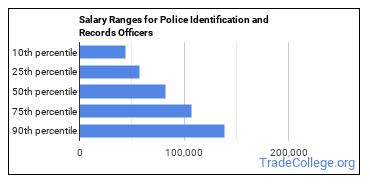
Police Identification and Records Officers who work in District of Columbia, Alaska, or Hawaii, make the highest salaries.
How much do Police Identification and Records Officers make in each U.S. state?
| State | Annual Mean Salary |
|---|---|
| Alabama | $64,750 |
| Alaska | $118,360 |
| Arizona | $81,810 |
| Arkansas | $60,340 |
| California | $107,120 |
| Colorado | $87,280 |
| Connecticut | $90,470 |
| Delaware | $89,930 |
| District of Columbia | $122,460 |
| Florida | $76,560 |
| Georgia | $66,430 |
| Hawaii | $107,010 |
| Idaho | $73,510 |
| Illinois | $87,470 |
| Indiana | $75,150 |
| Iowa | $73,320 |
| Kansas | $62,260 |
| Kentucky | $71,300 |
| Louisiana | $65,090 |
| Maine | $70,620 |
| Maryland | $102,370 |
| Massachusetts | $101,800 |
| Michigan | $86,580 |
| Minnesota | $76,640 |
| Mississippi | $64,150 |
| Missouri | $70,860 |
| Montana | $81,210 |
| Nebraska | $73,480 |
| Nevada | $87,680 |
| New Hampshire | $80,370 |
| New Jersey | $102,600 |
| New Mexico | $77,890 |
| New York | $91,250 |
| North Carolina | $60,810 |
| North Dakota | $84,340 |
| Ohio | $75,310 |
| Oklahoma | $66,130 |
| Oregon | $93,840 |
| Pennsylvania | $85,730 |
| Rhode Island | $86,580 |
| South Carolina | $60,420 |
| South Dakota | $72,050 |
| Tennessee | $71,940 |
| Texas | $79,950 |
| Utah | $80,840 |
| Vermont | $83,060 |
| Virginia | $98,850 |
| Washington | $85,440 |
| West Virginia | $86,340 |
| Wisconsin | $76,590 |
| Wyoming | $81,750 |
What Tools & Technology do Police Identification and Records Officers Use?
Although they’re not necessarily needed for all jobs, the following technologies are used by many Police Identification and Records Officers:
- Microsoft Excel
- Microsoft Word
- Microsoft Office
- Web browser software
- Microsoft Visio
- Adobe Systems Adobe Photoshop
- Database software
- National Crime Information Center NCIC database
- Integrated Automated Fingerprint Identification System IAFIS
- National Integrated Ballistics Information Network NIBIN
- DesignWare 3D EyeWitness
- SmartDraw.com SmartDraw Legal
- The CAD Zone The Crime Zone
- Computer aided composite drawing software
- Eos Systems PhotoModeler
- Image enhancement software
- Trancite Logic Systems ScenePD
- Visual Statement Vista FX3 CSI
- DataWorks Plus Digital CrimeScene
- DeChant Consulting Services iWitness
Becoming a Police Identification & Records Officer
Are there Police Identification and Records Officers education requirements?
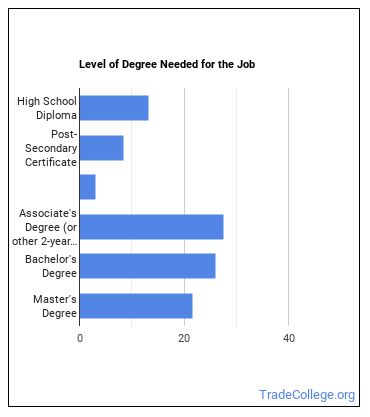
What work experience do I need to become a Police Identification & Records Officer?
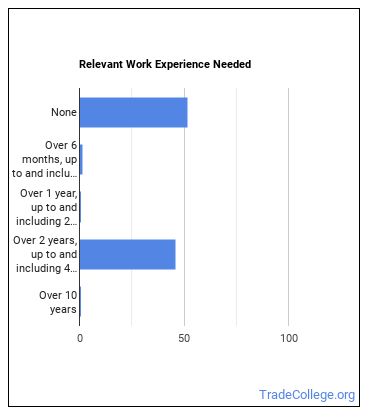
Where Police Identification and Records Officers Are Employed
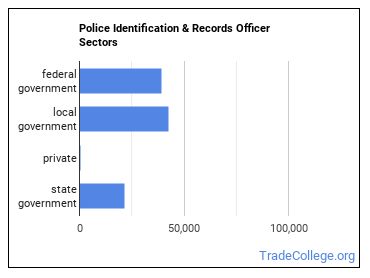
Below are examples of industries where Police Identification and Records Officers work:
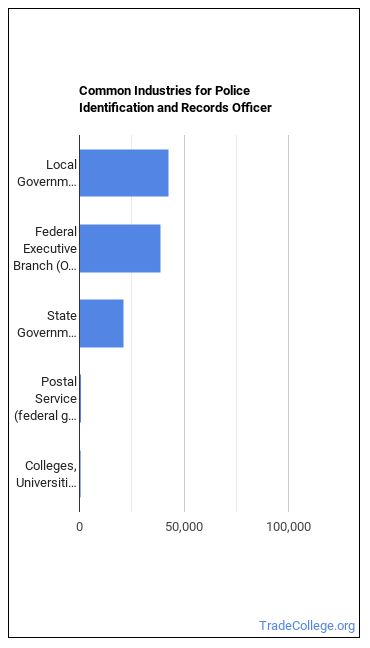
Other Jobs You May be Interested In
Those interested in being a Police Identification and Records Officer may also be interested in:
Career changers with experience as a Police Identification and Records Officer sometimes find work in one of the following fields:
References:
More about our data sources and methodologies.
Featured Schools
 Request Info
Request Info
|
Southern New Hampshire University You have goals. Southern New Hampshire University can help you get there. Whether you need a bachelor's degree to get into a career or want a master's degree to move up in your current career, SNHU has an online program for you. Find your degree from over 200 online programs. Learn More > |
